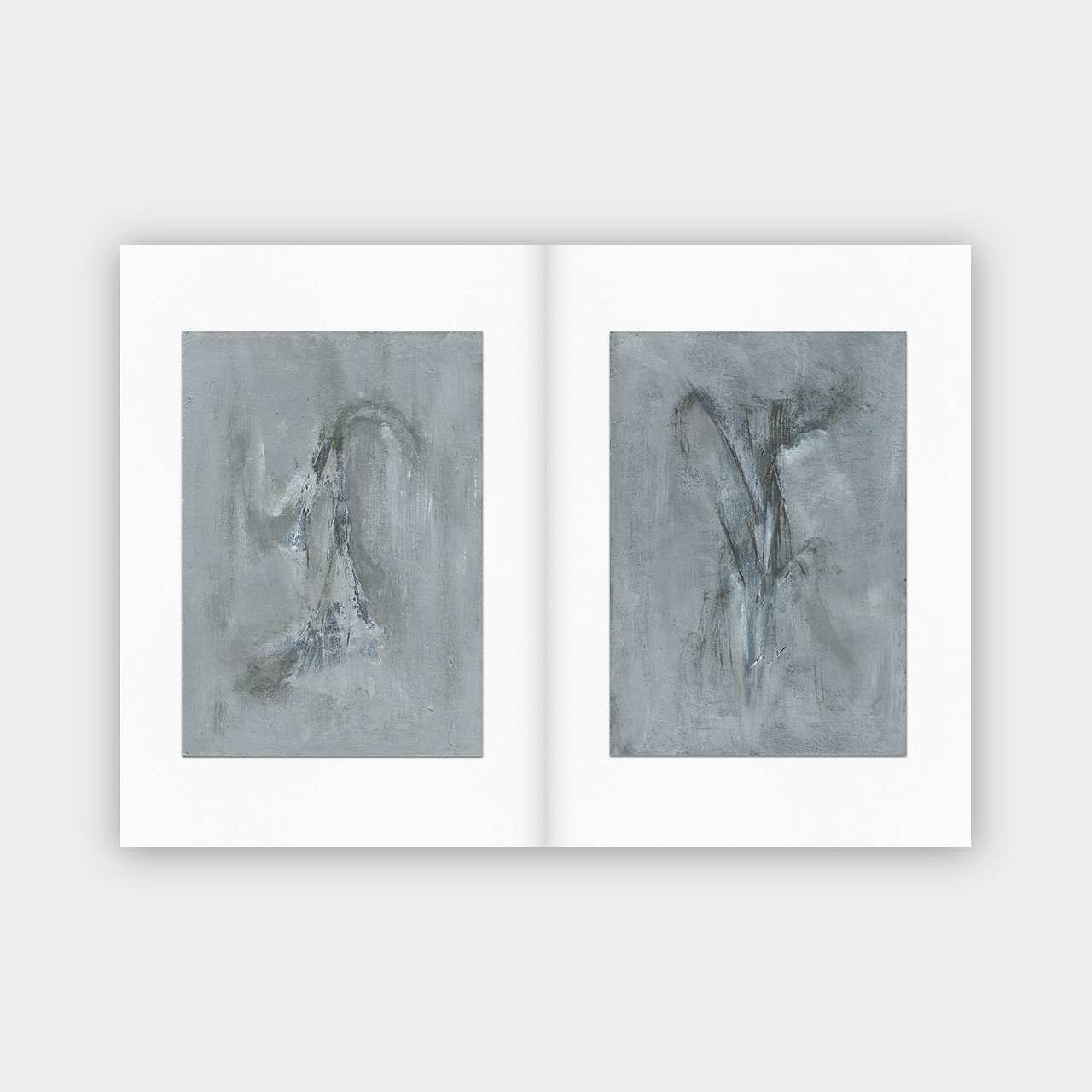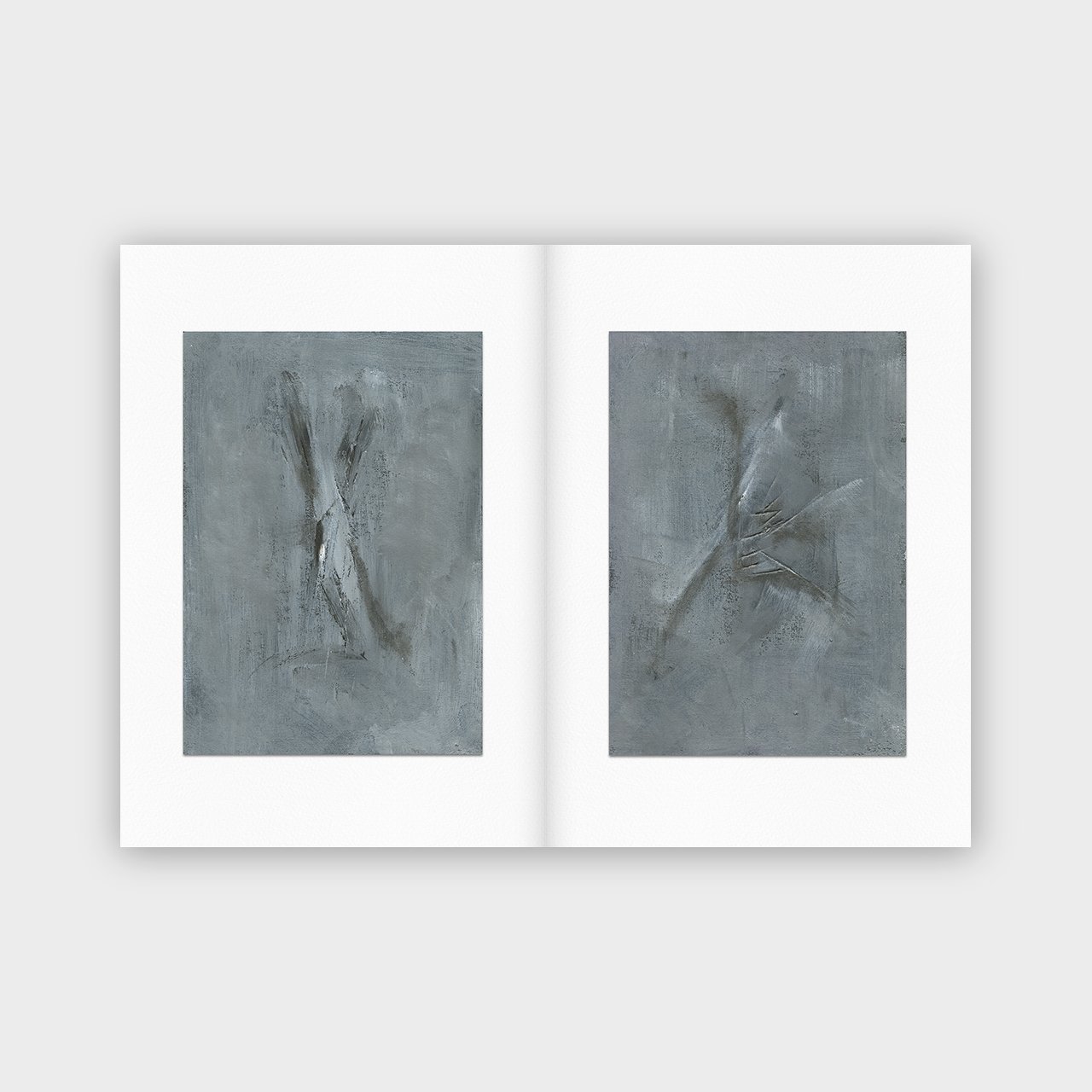



Cut Marks (2021)
acrylic, charcoal and ink on board
The phrase 'cut marks' is used by archaeologists to describe the ghost presences of humans left on ancient animal bones. These incisions, preserved for thousands of years, are made by the sharp edges of tools used to butcher animals. They can be read as an unintentional form of communication; unwitting acts of testimony spanning millennia. As such they amount to an oblique and prototypical form of mark-making that speaks volubly about the visceral nature of living and dying in the Palaeolithic.
Accordingly, Cut Marks visits a series of violent actions on the painting surface, before over-painting them with various pigments, imitating the way animal bone assemblages become gradually subsumed by soil to form part of the archaeological record.